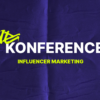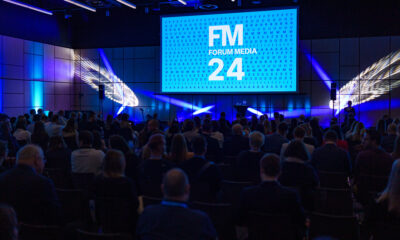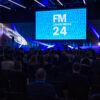Konference
Ve víru výkonnostního marketingu na Newsfeed Day 2018!
Ve Francouzském institutu poblíž Václavského náměstí, se v úterý 17. dubna konal první ročník konference s názvem Newsfeed Day týkající se trendů a inspirace pro marketéry na Facebooku. Sepsali pro vás to nejzajímavější, co jste se mohli na této konferenci dozvědět.
Před mikrofonem se postupně vystřídalo 10 řečníků z online vyhledávače letenek Kiwi.com, největšího slevového portálu v ČR Slevomat.cz nebo z agentur 2Fresh a Operam. Vybrali jsme pro vás pár věcí, které nás zaujaly a níže si můžete přečíst i krátký rozhovor s jedním z řečníků.

Například Pavel Tekel z Facebooku, ve své přednášce s názvem “Kreativa jako základní pilíř kampaně,” prozradil několik bodů, kterými by se měli tvůrci obsahu na této sociální síti řídit.
Zároveň připomněl, že většina uživatelů si stále přehrává video bez zvuku (ilustroval na příkladu videoklipu intepreta The Weeknd), i proto pokud obsahuje vaše video informaci, kterou chcete předat pomocí zvuku, měli byste do něj přidat upozornění, ať si jej uživatel zapne. by měla videa na Facebooku získat pozornost rychle a sdělovat jednoznačné příběhy i beze slov.
Uvedl také několik kampaní od známých značek, které mohou sloužit jako inspirace pro tvůrce obsahu. Například 107 sekundové shrnutí konference od Applu a představení produktů.
https://www.youtube.com/watch?v=CS8IC5LXqIw
Roman Gavuliak, z agentury Operam, která se zaměřuje na online marketing několika největších hollywoodských studií, zase objasnil, že jejich úlohou je i přesvědčit americká kina, aby film promítala. V premiéře je totiž pro divaka dostupných až 10 filmů. Gavuliak také prozradil, jak v Operamu využívají pokročilé analytické techniky v podobě segmentace dat a automatizace sběru feedbacku od uživatelů. Současně pak mluvil také o tom, jak vytvářejí doporučení pro studia, jak by měly být jednotlivé trailery sestaveny.

Celým dnem svižně provázela moderátorka Pavlína Louženská.
Podařilo se nám pro vás také vyzpovídat jednoho ze spíkrů konference Daniela Shepherda z oceněné agentury Goodstuff. Přečtěte si s ním krátký rozhovor v angličtině:
Hello Dan, Could you please tell our readers more about GoodStuff agency and who are your current clients?
Goodstuff are an independent media agency in the UK. In 2017 we won the Media Week “Media Agency of the Year” which shows how well such a small company are doing against all of the larger networks. My current clients include ITV who are one of the main broadcaster television channels in the UK, House of Fraser who are a department store and Harry’s which is a razor brand for men.
What do you think are nowadays the basic rules for brands on social so that people spend time with the content they create?
There is no easy way to select a list of rules, as every brand is slightly different and more importantly their audience is different. What’s important is for the brand to understand how their audience consumes media – how much time do they spend on Facebook & Instagram, what are their behaviours (do they mostly stay in-app to consume videos, or do they click out to articles, etc…) and then use those learnings to inform your social strategy.
You mentioned Magpie Effect in your presentation could you tell us more about it and how it is applied?
The Magpie Effect is one technique to getting users to spend more time with your advertising and retaining their attention. This Effect was one of the main learnings from a study that MEC conducted in 2017, that found that users engagement rates and dwell time increased with new ad formats or exciting creative – when you show someone something new, they are much more likely to pay attention. As an example to how this can currently be applied in the UK market, Facebook have recently released a Collection format where you can overlay product tags, creating an immersive shopping experience without having to leave the app. This format is not currently being widely used in the UK so a user would be more likely to stop and explore the format, and therefore spend time with your brand.
There was a movement in the UK which has been termed the “Pivot to Video”. During this time, newsbrands and other publishers of content realised that their consumers were watching more and more video, so started to release their content in video form to suit consumer habits. This resulted in more and more video being produced, which is a trend that we have seen on Facebook over the past few years.
In your lecture you also mentioned that Brand Response is a short time solution and that video became a new type of journalism, what exactly did you mean by that?
In terms of brand response, this is a way of measuring your campaign against metrics which are immediately available (for example, video views or click through rates). This is often used to measure the success of a campaign in the short term, but if you are actually looking to build your brand then in the long term you need to focus on shifting brand metrics such as ad recall and brand favourability. The theory behind brand response is that the more video views you get, the higher ad recall there will be because more people remember seeing the ad. That’s not always the case, so I think it’s important to distinguish the difference between both brand-response and brand building.
Jak citovat tento článek?
VOKOUN, Michal. Ve víru výkonnostního marketingu na Newsfeed Day 2018!. In: Markething [online], 2018. ISSN 1805 – 4991. Dostupné z: https://markething.cz/newsfeed-day-2018







